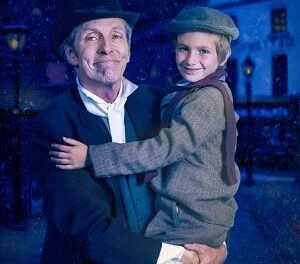Kevin Lawrence, violin, and Dmitri Shteinberg, piano, welcomed their audience to the North Carolina School of the Arts for their Faculty Artist series. The set list highlighted the ’20s – the 1720s, 1820s 1920s, and 2020s – and ranged from Bach to a composition from a current UNCSA student. This concert truly captured a multitude of musical styles as the audience was transported among eras.
The program opened with Bach’s Sonata No. 3 in E, composed 1720-23. The sonata incorporates four movements with different styles, all of which the performers handled gracefully. Lawrence and Shteinberg swapped the thematic material back and forth with ease, each taking the spotlight when needed. This piece in particular showcased the time and energy that was put into this performance. The musical chemistry between the two could not be missed as they navigated together through each movement. The fourth movement, the Allegro, boasted beautiful dynamic contrast from the duo and a powerful, driving momentum that formed a fantastic end to this piece.
“Desert Glass,” composed in 2021 by student composer Peter Noll, came next in the program. Noll’s work begins with an aloof and delicate piano introduction, followed shortly after by a soft violin entrance. It remains powerful and moving despite the dark undertones being produced. This ethereal work had me and the rest of the audience encapsulated by the minimalist nature of the music, as well as the interesting techniques that Shteinberg used. Noll’s score calls for dampening and plucking of the strings in the piano at many points during this piece. This created a mystical effect when combined with the shrill and fleeting sounds of the violin, and left the audience longing for more when the movement came to a close.
The audience was transported back to 1826 with Franz Schubert’s Rondo in B minor. This piece is nothing short of virtuosic and proud, demanding intense technical skill from both performers. The music itself is spirited, requiring a proper balance to maintain the everchanging colors and moods of this work. Lawrence skillfully played both the lyrical and lively passages of this movement, knowing exactly when and where to shine. The same can be said for Shteinberg. His expert use of dynamics and phrasing during this piece was vital to capture the audience’s attention. The performance ended on a dramatic note followed by thunderous applause.
Violin Sonata No. 2 “Poème Mystique,” composed by Ernest Bloch in 1924, was the final selection of the night and was unlike anything the audience had previously heard in the program. The four distinct and contrasting sections of this work kept the crowd engaged and interested to the very last note. The duo played with intense depth and understanding of the music that was felt even by those watching the concert from home. Shteinberg’s playing in this piece was beautifully balanced and sensitive, matching the thoughtful tone of Lawrence’s bowing. This mystic and beautiful selection was the perfect end to a night of musical celebration.
A complete recording of this performance can be found on YouTube with the title “Embracing the ’20s- UNCSA School of Music Faculty Artist Series.”











